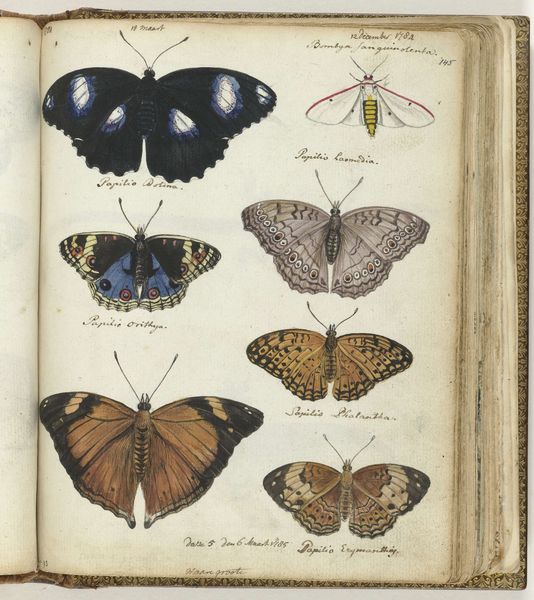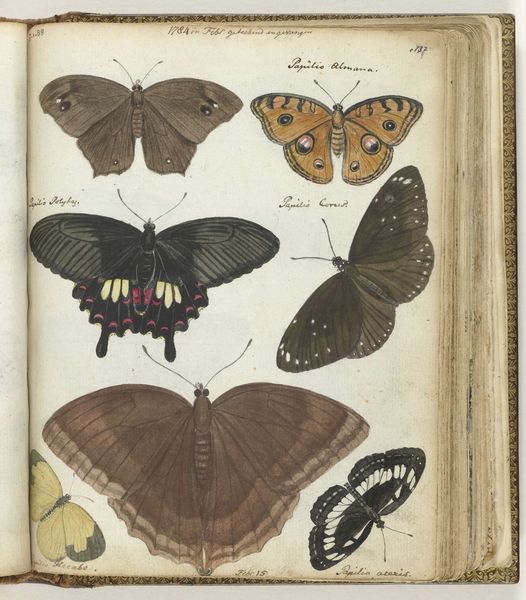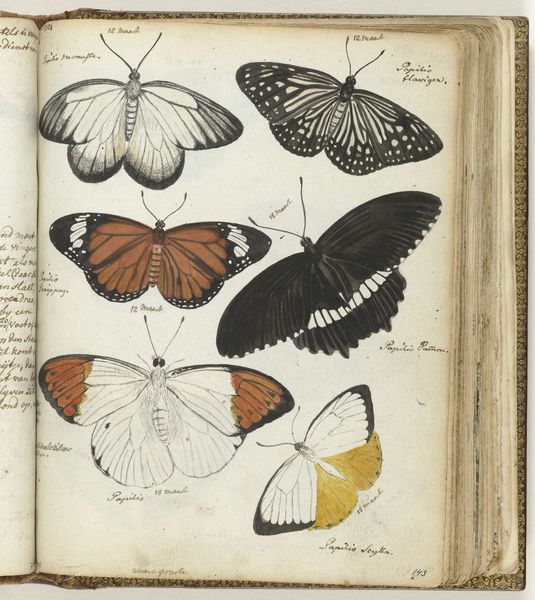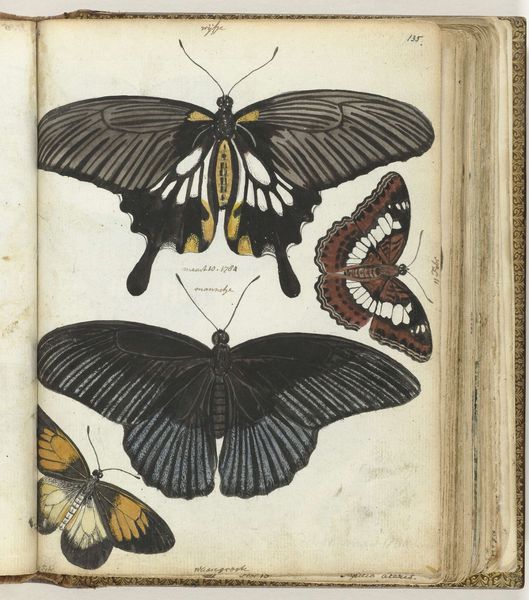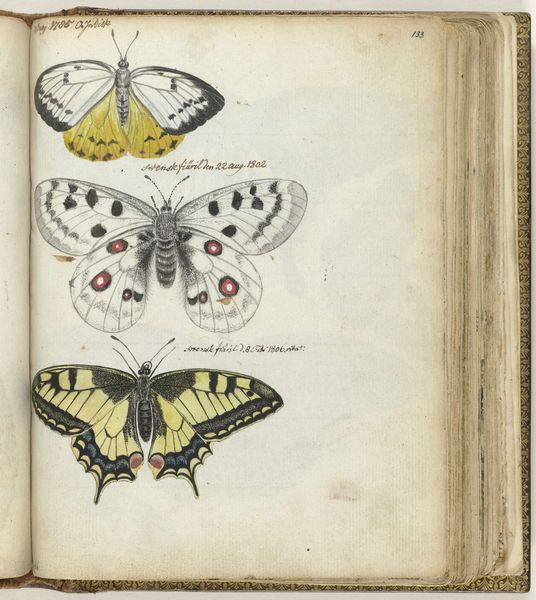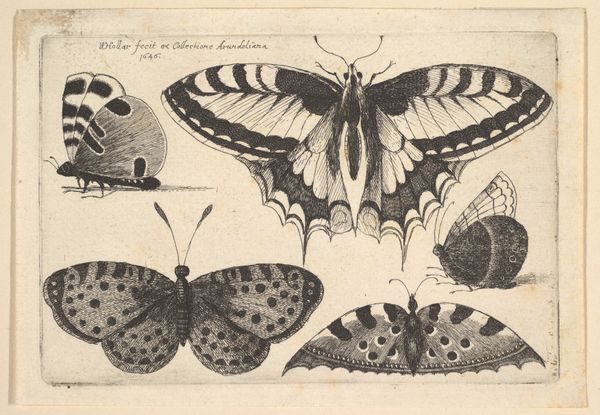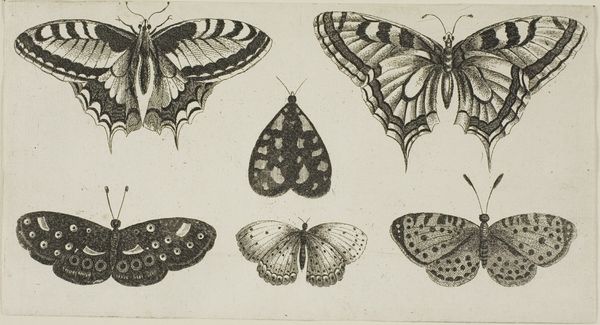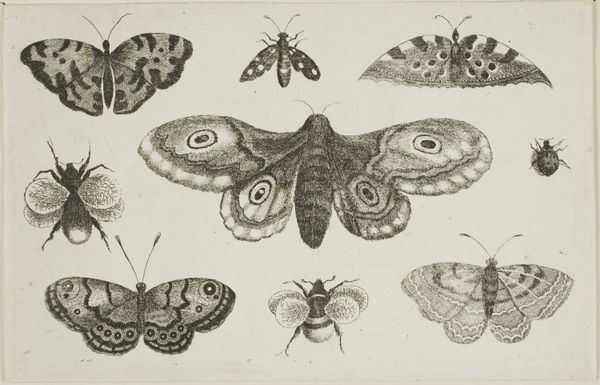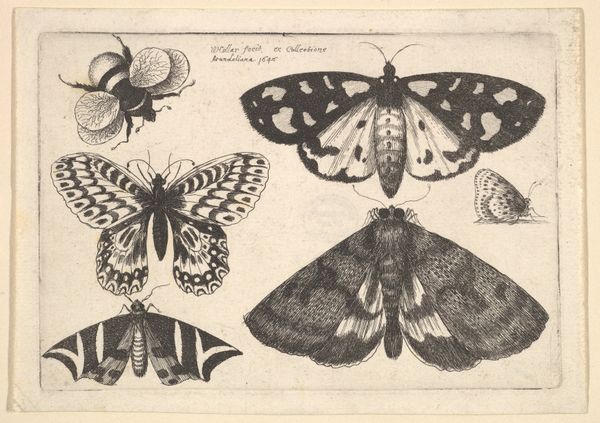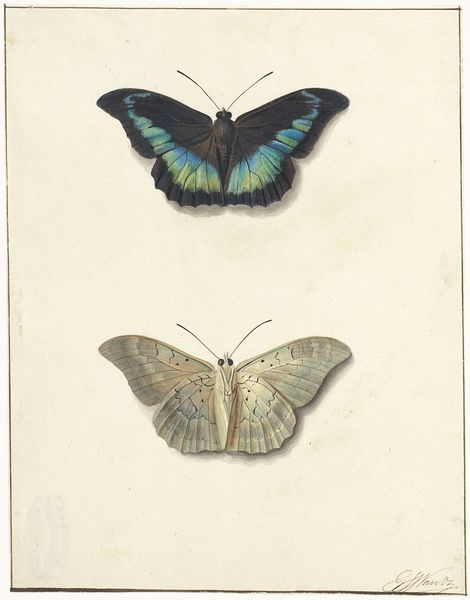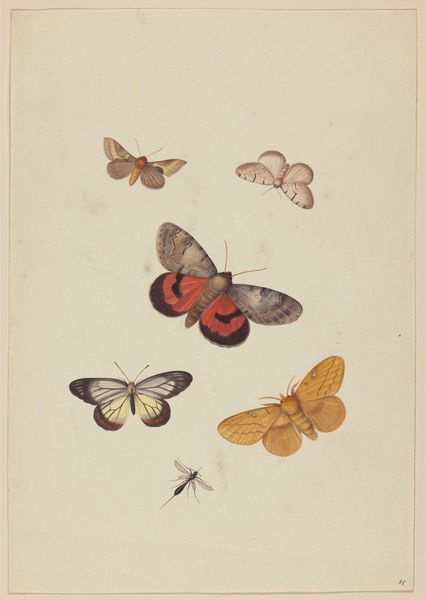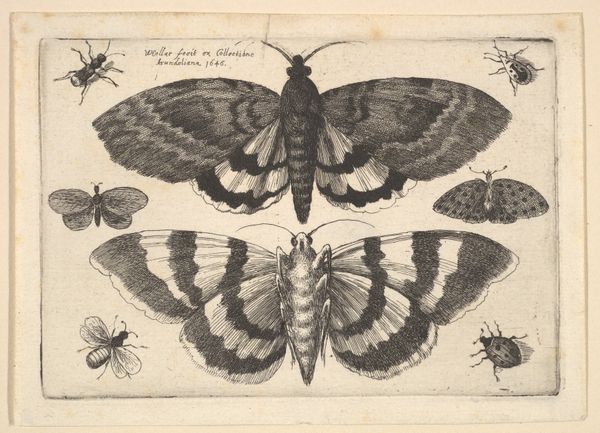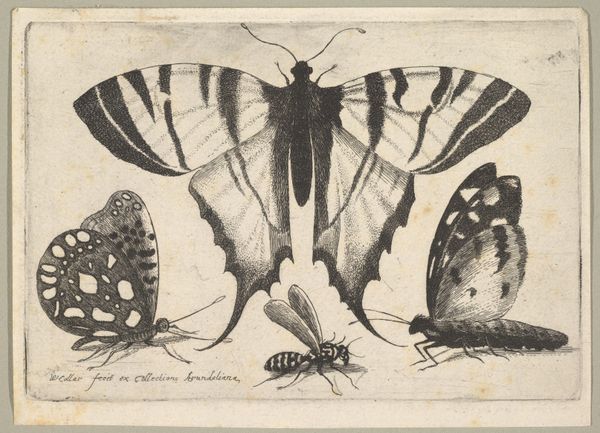
drawing, coloured-pencil, watercolor
#
drawing
#
coloured-pencil
#
landscape
#
watercolor
#
coloured pencil
#
watercolour illustration
#
botanical art
#
watercolor
Dimensions: height 195 mm, width 155 mm
Copyright: Rijks Museum: Open Domain
Curator: This sheet, attributed to Jan Brandes and possibly dated 1785, is titled "Vlinders van Java"—Butterflies of Java. It is rendered in watercolor and colored pencil. Editor: At first glance, the page seems so delicate, a captured moment of scientific observation alongside this implicit violence of pinning insects for display. Curator: Indeed. Brandes was a clergyman, but also worked as a draughtsman for the Dutch East India Company. We see this intersection so clearly here—scientific endeavor funded by colonial exploitation. The paper itself, the source of pigments for the watercolors and pencils...these raw materials connect to global trade routes and exploitative labor practices. Editor: Absolutely. And it speaks volumes that he depicts butterflies, creatures symbolic of transformation and freedom, in a manner that confines them. Do you think his detailed rendering, capturing each unique marking, almost serves to dehumanize, reinforcing the distance between the colonizer and colonized, objectifying even the natural world? Curator: Precisely. Brandes meticulously documents each specimen, almost as if categorizing and controlling nature. He flattens the landscapes butterflies inhabit, effectively extracting and owning their very existence. The materiality itself is part of this power dynamic, each application rendering these objects commodities within his and the VOC's reach. Editor: Look closely, though. I see these tiny imperfections in his meticulous method – that’s almost like acts of subtle resistance. He brings his lived body to this encounter despite his intent! This also opens a deeper question: who did Brandes intend this notebook for, who was the patron? Curator: A fascinating point, especially thinking about the act of collecting such illustrations for European scientific circles back home. The paper stock suggests an expectation of posterity, of preserved observation—the consumption and digestion of "new" material for "enlightened" thought in European intellectual markets. Editor: The act of preserving and presenting knowledge of a different place like this seems rife with embedded cultural assumptions, power imbalances, and possibly ethical challenges as it is viewed and consumed through different lenses over centuries. Curator: The intersectional layers provide ample space for continuous exploration. I find myself reflecting on the consequences of such visual representations within a historical framework of colonial power. Editor: Yes, Brandes’ butterflies still prompt us to contemplate our role in the continuing dialogues between history, material, and power.
Comments
No comments
Be the first to comment and join the conversation on the ultimate creative platform.
